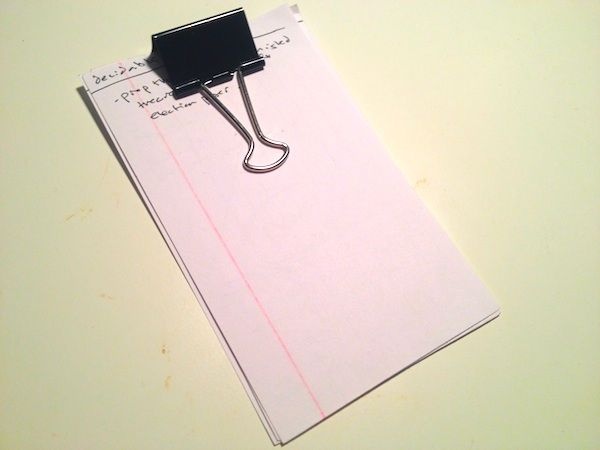
The Difficulty of Deep Projects
For the sake of discussion, let’s define a deep project to be a pursuit that leverages your expertise to generate a large amount of new value. These projects require deep work to complete, are rarely urgent and often self-initiated (e.g., no one is demanding their immediate completion), and have the potential to significantly transform or advance your professional life.
Examples of deep projects include writing a highly original book,creating an irresistible piece of software, or introducing a new academic theory.
The problem with deep projects is that they’re complicated and really hard. Almost any other activity will seem more appealing in the moment — so they keep getting pushed aside as something that you’ll “get to soon.”
Recently, I’ve been experimenting with a habit that seems to help with this challenge.
I call it, the depth deck…
The Depth Deck
The idea behind the depth deck is simple. Identify one or two deep projects that are important to your professional life.
For each project, identify one or two concrete next steps that:
- require deep work;
- are self-contained in the sense that they have a single focus and a clear criteria for when they’re completed.
You can vary the sizes of these steps. Perhaps some require only an hour or two of deep work, while others might require 10 to 15 hours. (If you think more time is needed, than you should probably break it down into smaller pieces.)
You can also vary between decidable and undecidable tasks. (I try to keep half my next steps decidable and half undecidable). If you select an undecidable task, however, you should integrate a time limit into your completion criteria (e.g., solve this proof orspend 15 deep hours on it: whichever comes first), as, by definition, you cannot force such efforts.
Next, record each next step on its own blank index card. Under its description — and this is important — write the date that you started it. Take this small stack of index cards, fasten them with a binder clip, and keep them with your work stuff at all times. (See the image above.)
This is your depth deck.
Now, going forward, whenever you put aside time for working on important, but non-urgent projects, focus your attention on one of the small number of steps in the deck. When you finish one of these steps, record on the card the date you finished it, add it to a completed pile, and create a new card to replace it.
Why it Works
There are three reasons why this simple habit helps counteract the difficulty of deep projects mentioned earlier.
- The first reason is clarity. As mentioned, deep projects are complicated and hard, so it’s easy for them to morph into an ambiguous, overwhelming mess. This is not a state that will generate much productivity. The depth deck cuts through this murkiness and produces a small number of concrete next step that can become the target for all your ambition-driven energy.
- The second reason is priority. The idea that should reduce your obligations to clear next steps is standard productivity practice. By pulling out a small number of next steps that affect projects of real significance, however, and then keeping them with you at all times in their own specialdeck, helps you maintain a sense of high priority for these high value pursuits, even as the rest of your time saturates in shallower minutia.
- The third reason is accountability. Because you record the date in which you started on each next step, and you keep the depth deck with you, you’ll be constantly confronted with evidence about how much time you’re letting pass without taking action on something important to you. The fact that these next steps are relatively small plays an important role here. If, for example, on January 1, you added a card that said, “write a novel,” and three weeks go by without you doing much about it, this isn’t so distressing: a novel is a really big project that takes a long time. Three weeks is just a drop in the bucket for this project’s duration. On the other hand, if you have a small next step in your depth deck that reads, “write a back story on your five main characters,” and you let three weeks go by, you’ll be confronted with the reality that you couldn’t even scratch together a handful of hours for your project in the last 21 days! This is more embarrassing. Avoiding such internal embarrassment will spur your mind into action.
- (A bonus benefit of this strategy is the pile of completed cards it generates. Periodically browsing these cards can provide inspiration — e.g., transform your self-image into someone who does get deep work done — as well as important knowledge — e.g., if you notice tasks of a certain type take a long time to complete, you might better schedule time for them.)
To summarize, the depth deck is a relatively minor hack. There are many others like it that might help you advance in the battle to consistently work deeply on important things. The bigger point here, therefore, is the recognition that to master the art of deep work you need to continually muster every advantage available.



